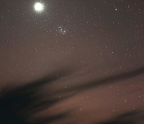Three missions head for MARS

NEXT YEAR, EARTH WILL INVADE MARS. Launch opportunities to Mars occur once every 26 months, and during this year’s launch window — which spanned July and August — three spacecraft were set to begin their journeys. If everything goes well, in early 2021 they’ll deliver two orbiters, a lander and two rovers to Mars, joining the six orbiters, one lander and one rover that already operate there.
Robotic spacecraft have orbited Mars continuously since 1997. The numerous missions have produced global maps of albedo, topography and composition, finding evidence for abundant shallow subsurface ice and a distant past of longterm environments suitable for life. NASA seeks to take the next step with its Perseverance rover, going beyond the search for habitable environments to the search for life itself.
Perseverance won’t be alone. Two other launches represent efforts to expand the exclusive club of agencies that have achieved successful missions at Mars beyond NASA, ESA and India. The United Arab Emirates has launched an orbiter to Mars, and China’s plans are even more ambitious. Both missions, if successful, would mark historic firsts for their countries.

China’s aspirations
China’s bold plans for its first Mars mission involve an orbiter, lander and rover. No other agency has attempted more than an orbiter on its first mission. China has already demonstrated capability for deep space navigation with Chang’e 2, which it piloted out of lunar orbit and on to a rendezvous with asteroid 4179 Toutatis. China also placed a lander and rover on the Moon on its first attempt with Chang’e 3.
However, landing on Mars is far more difficult than on the Moon because of the planet’s atmosphere, which is thick enough to
You’re reading a preview, subscribe to read more.
Start your free 30 days





